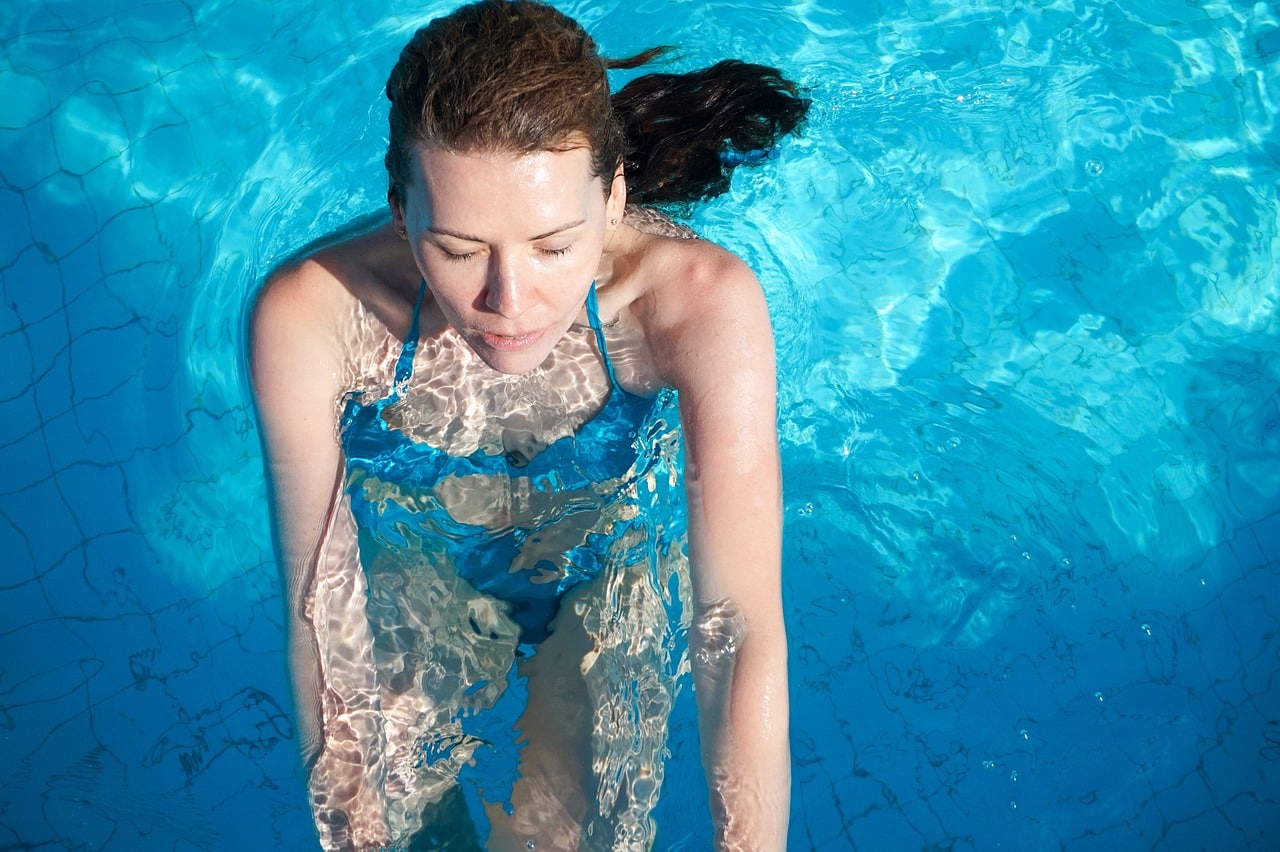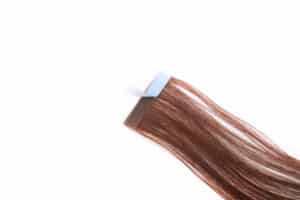Our website is supported by our users. This site contains affiliate links. If you click such a link and make a purchase, we may earn a commission for our endorsement, recommendation, testimonial, and/or link to any products or services from this website. Contact us for Questions

Can You Swim With Hair Extensions? The Quick Answer Explained
Are you a water lover who wants to keep your hair extensions looking fabulous? Great news! You can swim with hair extensions, but you should take some extra steps to keep them in tip-top shape.
In this detailed guide, we’ll chat about swimming with the different types of hair extensions. Learn how to protect them in the water, how to care for them afterward, and when it’s best to avoid swimming with them.
Get Ready to Dive In: Pre-Swim Tips
Swimming with hair extensions is no problem, but you should prep your hair before diving in.
Here are three simple yet essential steps: wet your hair, use a leave-in conditioner, and secure those extensions.
Wet Your Hair
Before jumping into the pool or ocean, it’s important to soak your hair with clean water. This helps create a barrier that protects your extensions from chlorine or saltwater damage. A swim cap can also be a game-changer in providing extra protection for your hair extensions.
Apply a Leave-In Conditioner
Next, put some leave-in conditioner on your extensions. Start a couple of inches from where they attach and work your way down. This helps keep your hair moist and easy to manage while swimming. It also helps minimize tangling and keeps the hair smooth and healthy.
Secure Your Extensions
Keep your hair in a low bun, braids, or a ponytail while swimming. This helps your extensions stay untangled and last longer. A secured hairstyle will help to protect the bonds from unnecessary stress and prolong the life of your extensions.
Types of Hair Extensions and Swimming
Now let’s see how different hair extension types handle water fun:
Clip-Ins: Not Great for Swimming
Clip-ins are easy to put in and remove, but removing them before swimming is better. Water can damage the clips and make your extensions loose or tangled. Since they are not a permanent solution, enjoying water activities without worrying about the extensions is much easier.
Tape-Ins: Good for Swimming
Tape-ins are more swim-friendly because they have waterproof glue. Just avoid putting oils or conditioners near the glue, as it may cause slippage. After swimming, wash your hair gently with a sulfate-free shampoo and thoroughly rinse to remove any chlorine or salt residue.
Sew-Ins: Secure for Swimming
Sew-ins are sewn to your natural hair and stay in place while swimming. Try to keep them as dry as possible by wearing a swim cap or tying your hair up in a high bun or braids. After swimming, gently detangle your hair using a wide-tooth comb and rinse with clean water to remove any chemicals or salt.
Fusion Extensions: Handle Water Carefully
Fusion extensions are attached with heat and can handle water if you take care. Don’t stay underwater too long, and avoid getting the bonded area wet, as it can weaken the bonds. After swimming, rinse your hair with fresh water and gently brush or comb through the extensions to remove tangles.
Post-Swim Hair Care: Show Your Extensions Some Love
After swimming, it’s essential to take care of your hair extensions. Here are some tips to ensure they stay looking fabulous:
Rinse and Wash
After swimming, rinse your extensions with lukewarm water to remove salt, chlorine, or other stuff from the water.
Then, gently wash them with a sulfate-free shampoo made for hair extensions and wigs. Make sure to follow the manufacturer’s instructions to avoid any damage.
Condition Your Extensions
Apply a generous amount of conditioner after shampooing to keep your hair extensions soft and smooth. Focus on the mid-lengths to the ends, avoiding the attachment points. This will help to restore moisture and prevent tangles. Rinse the conditioner out thoroughly with lukewarm water.
Dry Your Extensions
To dry your extensions, gently squeeze out excess water using a towel or microfiber cloth, but don’t wring or twist them. Pat them dry, then let them air dry as much as possible. If you need to use a blow dryer, opt for the lowest heat setting to prevent damage.
Detangle and Style
While your extensions are still damp, gently detangle them with a wide-tooth comb or your fingers. Start at the ends and work your way up to the roots to minimize hair breakage. Once your extensions are fully dry, style them however you like.
If you’re using heat-styling tools, apply a heat protectant first to keep the hair looking great.
How Chlorine and Salt Water Affect Hair Extensions
Swimming can be loads of fun, but be aware of how chlorine and salt water can impact your extensions. Chlorine can loosen and dry out your hair extensions, while salt water can dry them out and make them brittle.
Both can weaken the glue used in some extensions, which could lead to them coming off. Be sure to protect your hair extensions by taking the proper steps before and after swimming.
When to Skip Swimming with Hair Extensions
Sometimes, it’s best to avoid swimming with hair extensions. For instance, if you just got them, wait at least 48 hours before swimming so the bonds or tapes can fully secure.
Also, it’s best to skip swimming if you have an extension that doesn’t work well with water (like glued-in or keratin-bonded ones). This will help them last longer and prevent damage.
Tape-ins are better for swimming because they have waterproof adhesive. Ask your hairstylist for advice on swimming with your specific hair extensions.
Final Thoughts: Can You Swim With Hair Extensions?
As you can see, the answer to the question, can you swim with hair extensions, is yes!
Swimming with hair extensions is doable, but you’ve got to take some extra care. Know your extension type, and remember that synthetic materials aren’t good for swimming, while human hair extensions handle water better.
Before you dive in, protect your hair extensions. Be aware of the water type you’ll be swimming in (salt, chlorinated, fresh, or hard water), and choose the best extensions for that environment. Hand-tied hair extensions are also a great option since they can handle water exposure if you take care of them.
So, go ahead and enjoy swimming without worrying about your hair extensions. Just remember to give them some TLC, and you’ll be good to go!







